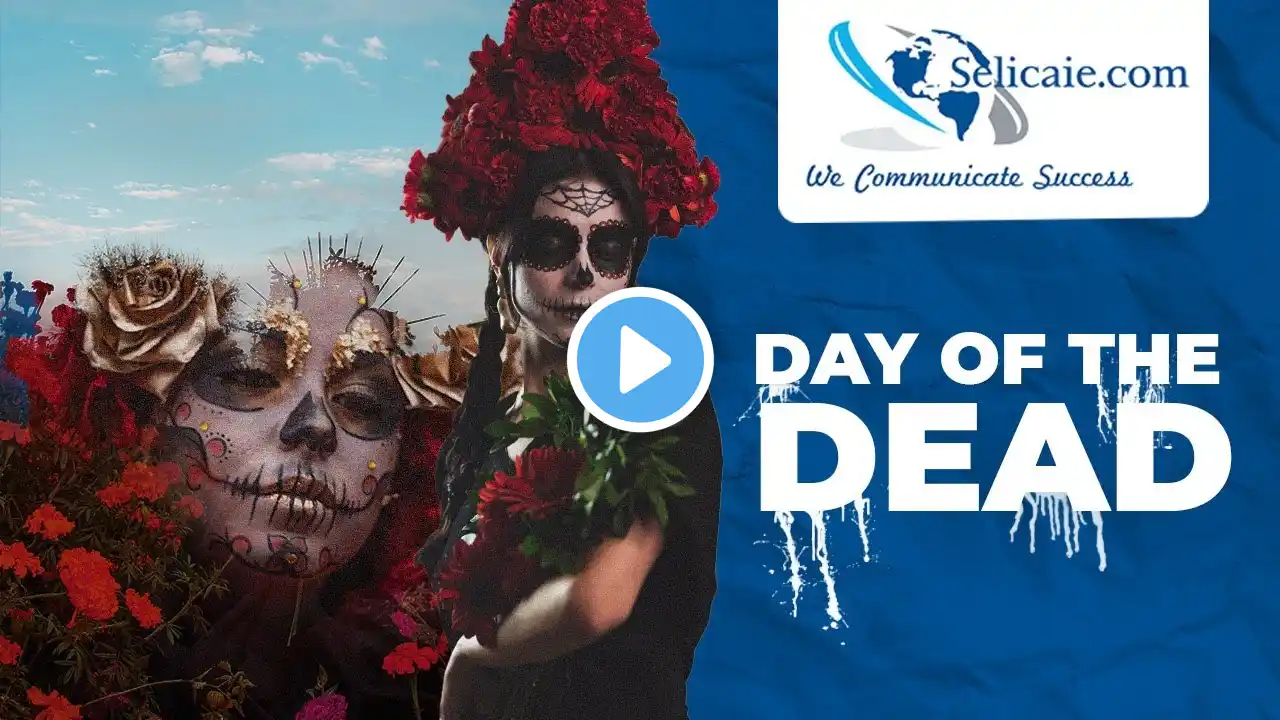
Uncover the Secrets of Day of the Dead 💀| Explore its History and Ancient Origins
Day of the Dead, or Día de los Muertos, is a traditional Mexican holiday celebrated on November 2nd. Day of the dead is considered as a time to remember and honor those who have departed on this day, Many people celebrate this day by visiting the graves of deceased loved ones, bringing their favorite foods, drinks and photos It is a happy, colorful celebration, it is believed that the souls of the dead return to visit their living family members. Women paint their faces in colorful make-up and dress with elegant outfits evoking the famous symbolic skeleton. Setting up Altars called Las Ofrendas ("offerings") in homes to welcome the souls, decorating it by bright orange and yellow Marigolds flowers which often referred to as “flowers of the dead” (flor de muerto), which thought it helps attract the deceased souls to the altar due to their strong scent Monarch butterflies play a role in Día de los Muertos because they are believed to hold the spirits of the departed. This belief stems from the fact that the first monarchs arrive in Mexico for the winter each fall on Nov. 1, which coincides with Día de los Muertos La Calavera Catrina or Catrina La Calavera is one of the most recognizable figures of Day of the Dead, a towering female skeleton with vibrant make up and a flamboyant feathery hat. The Lady of Death worshipped by the Aztecs protected their departed loved ones, guiding them through their final stages of the life and death cycles. Day of the Dead originated several thousand years ago with the Aztec, Toltec, and other Nahua people. The ancient indigenous people of Mexico have practiced rituals celebrating the lives of past ancestors for around 3,000 years. who considered mourning the dead disrespectful. For these cultures, death was a natural phase in life’s long continuum, they believed that the dead were still members of the community, kept alive in memory and spirit, and during Día de los Muertos, they temporarily returned to Earth. As complex as the culture of Mexico itself, Dia de los Muertos is a fusion of pre-Columbian religious tradition (Olmec, Mayan, Aztec, etc.) and Iberian observance of the feast days, itself a complex blend of Christian and "pagan" traditions. In the 20th century, the month-long festivities were condensed to 3 days called The Days of the Dead. Halloween on October 31, Day of the Innocents or Day of the Children and All Saints Day on November 1 and Day of the Dead-on November 2. Though related, the two annual events differ greatly in traditions and tone and they are entirely separate Whereas Halloween embraces terror and mischief on the last night of October. Day of the Dead festivities unfold over the first two days of November in an explosion of color and life-affirming joy and it is portrayed as a holiday of joyful celebration rather than mourning Today, Day of the dead or Día de Muertos is celebrated in Mexico, other Latin American countries and even the United States. Although customs vary by region, each custom carries a special meaning and significance for this beautiful celebration. So, whether you celebrate this holiday each year or want to learn about these traditions, there is always something new to learn about this celebration Subscribe to our channel @Selicaie for more videos like this. #dayofthedead #selicaie #learnwithselica #ofrenda #papelpicado #marigoldflower #lacatrina #altars #dayofthedead #díadelosmuertos #halloween #mexico #diademuertos #catrina #sugarskull #makeup